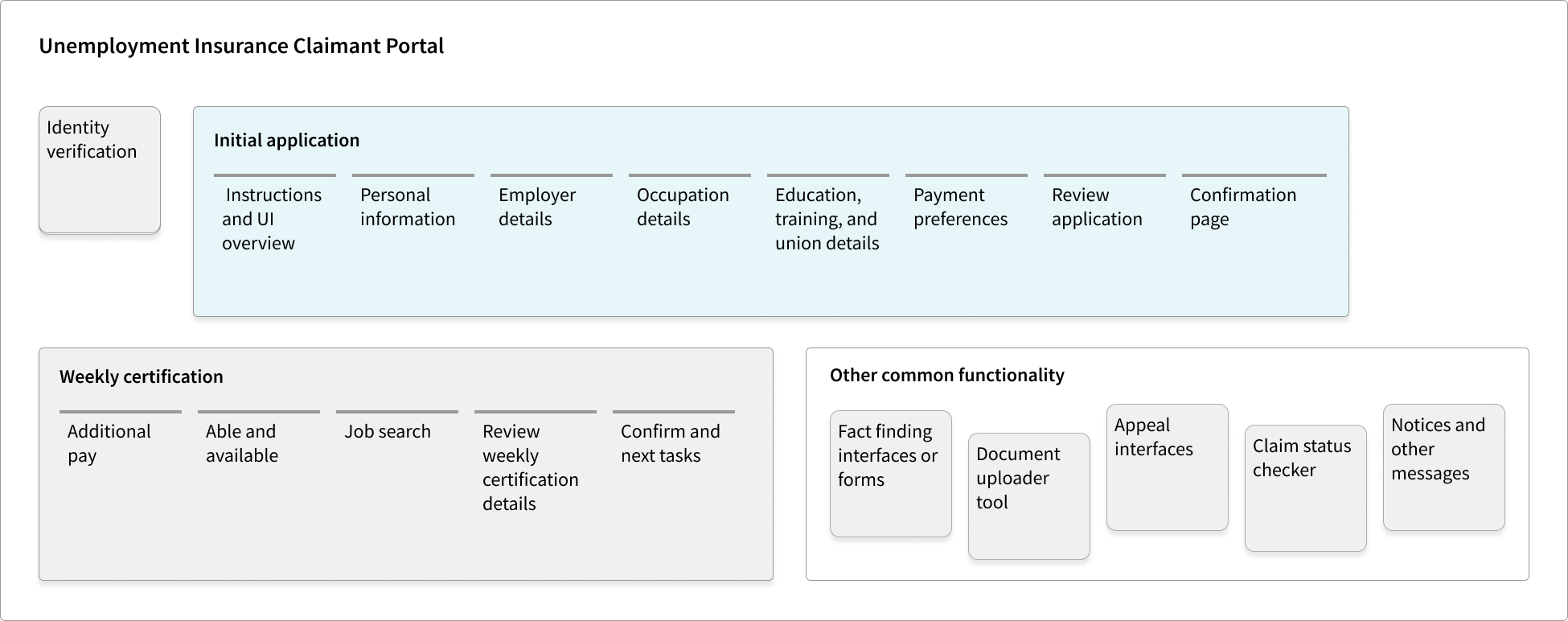The U.S. Department of Labor is working to define and develop tangible examples of what good looks like for the unemployment insurance (UI) claimant experience. We are using design best practices and our CX principles to address pain points in the UI process for both claimants and state staff with an evidence-based approach.
This resource aims to provide principles, examples, and support to help states make impactful improvements to online applications to increase claimant self-service and reduce unnecessary interventions by state agency staff and improve the efficiency and timeliness of the program. Though each state and territory may have different application questions and requirements, we believe that there are enough commonalities in the application process across states that this resource will help all states to identify improvements they can make to their application process.
Taken together, the improvements in this resource may do the following:
- Improve the usability of the application and reduce claimants’ cognitive fatigue: These improvements support claimants by reducing confusion and helping them provide accurate answers to the information requested. They also may serve to increase the number of successful submissions of online applications.
- Reduce agent intervention: These recommendations have positive impacts on agent efficiency, either by decreasing corrections or providing complete information agents need to process a claim.
- Decrease digital access barriers to the program: These improvements help to ensure that all eligible claimants are able to successfully apply for and receive UI benefits.
While states may find these principles and examples helpful in their modernization efforts, it is also important to continually work to improve online applications through ongoing usability testing with diverse populations as well as measuring the customer experience through surveys, and collecting and analyzing data or metrics.
Typical UI application sections
Commonly, UI agencies seek to gather and provide information through the online application process across the following categories or sections basic screening and eligibility, personal details, employer details, occupation details, education, training, and union details, payment preferences, and sections to review and confirm application information. Organizing questions into logical groupings is an important learning aid for claimants when completing online applications.

The online application is often part of a larger group of online claimant services. In addition to an online intake application, states may offer claimants additional online tools to manage their claims. As a result, states are delivering services across a wide array of digital touchpoints, as illustrated in the figure below.

This resource is intended to highlight best practices to improve the online claimant experience, starting with the employment and occupation sections of initial applications. For resources covering improvements outside the initial application, review the document upload and claims status checker resources.
Research Methodology
One-hour focus groups were conducted with representatives from state workforce agencies, claimant advocate organizations, and other unemployment insurance (UI) experts, including:
- Representatives from eight state workforce agencies
- Claimant advocates from twelve states
- NASWA Behavioral Insights Team
- UI experts from USDOL
Questions centered around the most common mistakes or challenges these representatives have observed individuals make during the initial application (pre-qualification, instructions, personal and contact information, demographics, employment and occupation, education and training, additional information, review and confirmation) and weekly certification (able and available, work and income, work search) process.
We also recruited 19 participants to participate in user research sessions to test our recommendations and prototypes to improve the online initial application and weekly certification process.
In this resource
This resource contains principles and examples of high-impact improvements to consider making for different parts of the online application.
- CX principles for online applications describes broadly applicable best practices that when implemented across the various sections of an online application can increase claimant self-service and reduce the need for interventions from state agency staff.
- Initial application instructions section outlines specific recommendations states can implement to help individuals feel more confident when applying for UI benefits, including guidance to aid individuals as they evaluate how and where to apply for unemployment benefits.
- Personal information section provides guidance on how states can assist individuals to accurately enter their personal information, including inclusive ways to incorporate name fields and address formats and request personal identification documentation on the initial application.
- Employer and occupation sections highlight promising improvements within these sections to collect employment history, reason for filing for unemployment (separation information), and a claimant’s occupation. Gathering the information for these sections is particularly complex for claimants and state agencies alike.
- Review and confirmation sections highlight recommendations states can implement to help individuals accurately review the information they’ve provided on the initial application and to understand what next steps they may need to take in the process.
Please note that the U.S. Department of Labor’s engagement with the development of this resource was limited to describing best practices for content, interface and application design. Any state UI agency wishing to use examples contained in this resource retains full responsibility for ensuring the accuracy and legal sufficiency of any provisions and instructions issued.
